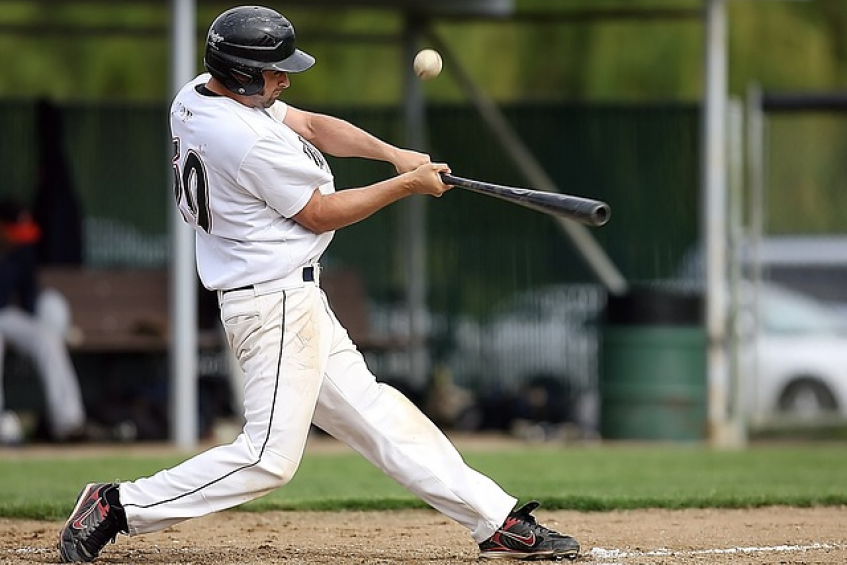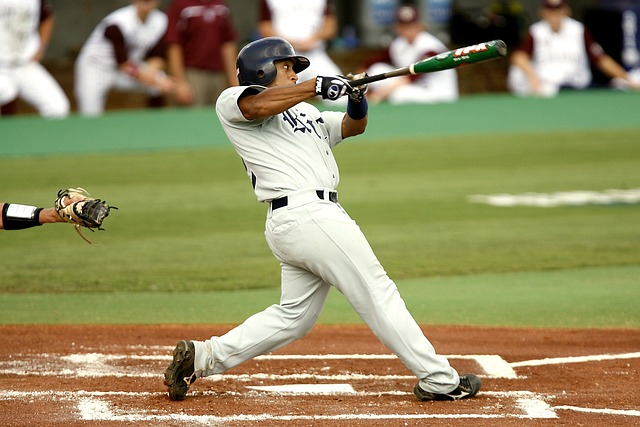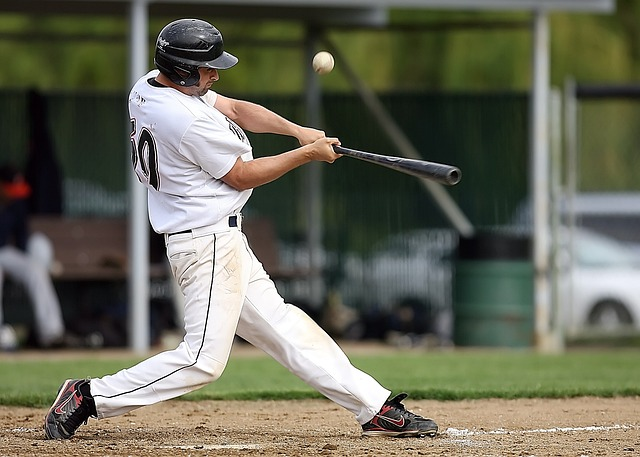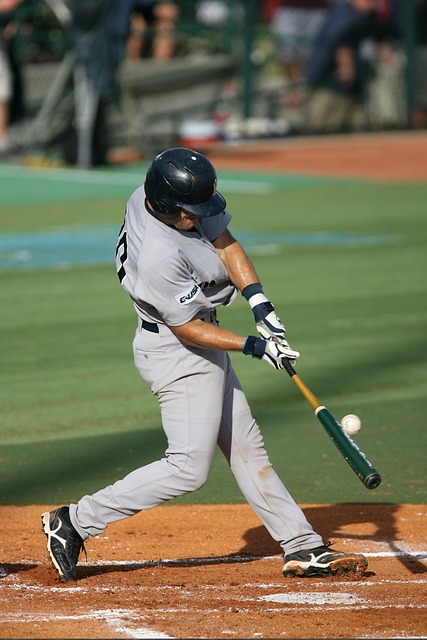
Since 1973, the designated hitter rule in baseball has changed the way the game is played, allowing for a type of player specialization that was previously unseen on the diamond. In this article, we delve into some of its key features, origin story and impact on the game: from how it works to the rules governing it, from the effects it has had on the actual playing of baseball to the debates surrounding its continuing existence, and more.
With an analysis of how the DH rule has evolved across two leagues since its adoption and the various perspectives on its influence and future, this article seeks to bring an understanding, appreciation and even anticipation of the designated hitter to readers all baseball fans alike.

In baseball, a designated hitter (DH) is a player who takes the place of another position player, usually the pitcher. This rule allows teams to use an extra batter in order to increase their offensive output. When a DH is used, the pitcher does not bat and stays on as a defensive player. This gives teams with poor hitting pitchers an advantage by allowing them to stay in the game longer and contribute offensively.
The American League permits teams to have a designated hitter while National League clubs require pitchers to hit for themselves. Thus, NL hurlers must practice batting even if they are not good hitters - which can be beneficial for those with strong hitting skills. In some cases, there may also be full-time DHs who only bat and don't play defense; this is rare but advantageous for squads with great hitters that provide consistent offense in the lineup. Additionally, pinch hitters or runners can replace DHs when needed or when they are on base respectively.
The designated hitter rule plays an important role in baseball and understanding its usage is essential for any fan of the sport. It boosts team offense or provides players with good hitting abilities an opportunity to help their squad succeed; it also extends time spent by quality batters if they lack fielding prowess.
The designated hitter is a tool baseball teams can use when they want to replace the pitcher with another player who has better hitting skills. It can also be used if the team's pitcher is a good hitter, but not a full-time designated hitter - allowing them to give their pitcher some rest from batting while still providing the team with an effective hitter.
In certain situations, using the designated hitter gives teams an extra batter in their lineup. For instance, if they have a right-handed pitcher who hits well and would normally be the only one to bat in that spot, then having an additional DH allows them to improve their batting order without sacrificing any of their pitchers' playing time on defense.
The designated hitter provides many benefits for teams; it lets them use pinch hitters or good hitting pitchers as needed while still having someone reliable at bat. Additionally, it gives pitchers more opportunity to focus on pitching rather than worrying about batting and ensures that there will always be someone capable of getting runs for the team.

The designated hitter rule was introduced in baseball to allow teams to use another player to bat instead of the pitcher. It replaced the batting rotation that had been in place for decades and brought about an increase in offense. Since 1973, it has been a great addition to the game, allowing for more strategic decisions regarding batting order and pinch hitting. Moreover, it has given many players the chance to show off their skills at the plate and make it into the Baseball Hall of Fame.

The designated hitter rule is an integral part of baseball, offering teams a plethora of advantages. By allowing a designated hitter to take the place of the pitcher in the batting lineup, teams can boost their chances of scoring runs. This is because they can insert a more experienced and powerful hitter into the DH spot instead of a weak-hitting pitcher. Moreover, it also safeguards starting pitchers from exhaustion due to long at-bats.
Studies have demonstrated that having a DH spot in lineups leads to higher run production as clubs are able to substitute weaker players with more productive offensive ones. Furthermore, this rule provides teams with flexibility when constructing lineups - they can bat any player regardless of their usual position if there's a DH present.
The universal DH rule has been widely discussed in professional baseball and adopted by some amateur leagues too. It has enabled many players who wouldn't otherwise have had successful careers to thrive and there's even talk about introducing it across both the National and American Leagues universally.
In conclusion, the designated hitter rule has been beneficial for baseball overall - increasing offensive production while providing greater lineup construction flexibility for teams alike.
The designated hitter (DH) is a unique role in baseball that allows teams to have an extra hitter in the lineup. This player, who typically isn't a starting pitcher, takes the place of the pitcher in the batting order and does not play defense. The DH rule was first implemented by the American League back in 1973 while the National League still requires pitchers to bat. High school rules are slightly different as they allow for any defensive player to be substituted with a designated hitter.
The importance of having a DH can be seen today - it gives teams more flexibility when it comes to their lineups, allowing them to rest pitchers or use good hitters instead of weak fielders as DHs without sacrificing offense. Over time, regulations regarding this role have changed depending on league and level of play; for example, Major League Baseball's DH can pinch hit but cannot take part in defense whereas Minor League Baseball's DH is allowed both hitting and fielding duties.
The American League in 1973 ushered in the designated hitter rule, the first of its kind for professional baseball. This allowed teams to substitute a player into the pitcher's defensive position and have them hit instead. The idea had been floated before but didn't gain much traction until it was officially introduced by the American League.
The designated hitter was seen as a way to boost offensive performance while giving pitchers some relief from batting duties. It wasn't until 2022 that the National League adopted this rule, believing good hitters as designated hitters would make scoring runs easier. Teams also began using good hitters as pinch hitters and having pitchers who were skilled at hitting bats in regular order - rotating them as pitchers batted in and out of play for better chances at scoring runs. Within ten years of 1973, many organizations had implemented this rule into their games.
The designated hitter rule is a Major League Baseball (MLB) regulation that allows teams to designate a player to bat in place of the pitcher. This hitter typically has better hitting skills than the pitcher, and is only used in the American League - not in the National League. The designated hitter rule was implemented back in 1973 and can be utilized multiple times throughout regular season games, as long as desired by team managers. It also applies during All-Star Games, World Series games, and Minor Leagues.
The designated hitter provides teams with an extra offensive weapon which enables them to rotate good hitters into their batting order for freshness. Additionally, it gives American League managers more flexibility when bringing in right-handed pitchers against left-handed batters without compromising their batting lineup. As such, this rule has been instrumental in helping American League teams win more World Series titles compared to National League counterparts over recent years.
The designated hitter rule is a staple of Major League Baseball, but why does the National League not use it? This regulation has been employed by the American League since 1973 and allows teams to substitute their starting pitcher with an exclusive designated hitter. This provides squads more freedom in their lineup, as the designated hitter can concentrate solely on hitting.
Nevertheless, NL pitchers are still anticipated to bat for themselves and managers must make tactical decisions about when to take out the pitcher from the game. The National League's choice to not utilize the designated hitter rule is based on tradition and gives managers additional strategic options. NL pitchers are expected to be more adaptable than in the American League, as they have both pitching and batting roles.
This also puts greater emphasis on offense, as NL teams must find good hitters who can also pitch well. Minor League Baseball - which is where most professional baseball talent comes from - still requires pitchers to hit too. This helps NL teams discover players who excel at both hitting and pitching alike.
The National League has kept this custom alive, so it seems unlikely that they will adopt the designated hitter rule anytime soon.
The designated hitter rule is a key part of Major League Baseball, and understanding how it can be used is essential. In MLB, the designated hitter has no limit to the number of times they can be employed for an entire game. This means that if a team has a great batter, they can use them as their DH all match long without having to substitute them out.
In amateur baseball though, the designated hitter may only be utilized for the starting pitcher and any subsequent relief pitchers. So if a team has an excellent hitting pitcher, they could deploy him as their DH for several innings before replacing him with another defensive player for the remainder of the game.
Outstanding hitters are invaluable in professional baseball and having one full-time DH gives teams an edge when competing to win. It's also possible to have someone other than just your starting pitcher serve as your designated hitter - such as good hitting pitchers or batters who aren't starters - allowing squads to have more balanced batting rotations while getting maximum output from their players' hitting abilities.
Sometimes teams even go so far as fielding nine players in their batting order with one serving solely as a full-time designated hitter; this allows them to keep that same spot in each inning's lineup filled by said DH.
Knowing when you can use your designated hitter and its limitations is important knowledge when playing baseball; although MLB permits using one all game long, there are alternatives like pinch hitters or good hitting pitchers which should not be overlooked either - these options help maximize offensive potential on any given team.
The designated hitter rule in baseball is an integral part of the game, but it's essential to comprehend the contrast between a pinch hitter and a designated hitter. The DH (or designated hitter) is a player who takes all at-bats instead of the pitcher before the game starts. On the other hand, a pinch hitter can be used to replace any offensive lineup member in baseball. This rule allows pitchers to stay on without batting while requiring defensive players to leave when using pinch hitters.
Designated hitters are usually good batters, yet they don't need to have similar hitting abilities as others. For instance, a right-handed pitcher could be substituted with a full-time DH who would hit better than him/herself. It's an excellent way for keeping up batting rotation and giving great hitters opportunities for hitting. Conversely, pinch hitters tend to be good batters too; however, they're normally brought in when needed - replacing strong batters from batting order or even pitchers if the team needs a more skilled one.
The designated hitter rule has been significant since its introduction and understanding differences between these two types of players is vital for understanding baseball itself. It enables teams to use extra batters in their lineup, which often helps them get some additional runs; although generally used as replacement for defensive players - pinch hitters can also substitute pitchers if necessary. Comprehending distinctions between these two kinds of players is important for grasping this sport completely.
The designated hitter rule is a vital component of baseball. It offers teams more offensive production and flexibility in their lineups without sacrificing the pitchers’ spot in exchange for pinch hitters or slugging pitchers. Along with that, the DH role has allowed many players to showcase their hitting abilities throughout their career.
The designated hitter was first introduced by the American League in 1973, and was accepted universally by the other National League teams in 2022, allowing all teams to see the advantages it brings to their lineup construction, bringing increased power and increased opportunity to a variety of players.
It is important to differentiate between the two roles, however — the designated hitter is used like a full-time replacement hitter, while the pinch hitter is used primarily as a substitute for a defensive player, but can also be substituted for a pitcher if the manager determines it is advantageous. Moreover, amateur games impose limits on the number of times one can use the DH in order to maintain the tradition of players being versatile in both batting and pitching.
In conclusion, the designated hitter has had a profound effect on Major League Baseball, creating more excitement for fans, increasing power numbers, and giving numerous players the chance to strut their stuff at the plate.
The point of a designated hitter is to add an extra offensive weapon to the lineup and take the pressure off the pitcher from having to hit. This has allowed pitchers to concentrate on the task of pitching, while also providing a faster pace of play due to less bunting.
The use of designated hitters was adopted in MLB's American League in 1973 and has been part of the game ever since.
In Baseball, the designated hitter (DH) is a player in the lineup who does not play on the field, but instead bats in place of the pitcher. This allows teams to substitute an extra hitter without having to compromise their defense.
The starting pitcher may also act as the designated hitter on certain occasions.
Yes, a designated hitter can hit for anyone in the game as long as they are stated before the start of the game. The DH may be used to bat for any defensive player and not only the pitcher.
Moreover, the DH can also move to a fielding position during the game.
Pinch-hitters are short-term substitutes, while designated hitters are part of the lineup. In other words, the designated hitter is expected to hit but does not take any further action on the field.
On the other hand, a pinch-hitter may enter the game for one at-bat or for the duration of the game. It is possible to pinch-hit for a designated hitter.
See Also: Baseball Batting Rules
Chris Sloan is a former baseball league commissioner and travel baseball coach who has made significant contributions to the sport. In 2018, he founded selectbaseballteams.com, a website that helps parents find youth and travel baseball teams in their local areas. Since its launch, the website has experienced impressive growth, offering a wealth of resources including teams, news, tournaments, and organizations. Chris's unwavering passion for baseball and his innovative approach to connecting parents with quality baseball programs have earned him a respected reputation in the baseball community, solidifying his legacy as a leading figure in the world of youth and travel baseball.
There are 0 comments on "What is the Designated Hitter Rule in Baseball?"
chandler allen says:
"Hi my name is chandler, i’ve enjoyed..."
On Wanting to tryout for summer ball. as an 18 year old
david graham says:
"With no current MLB team in Canada,..."
On With no current MLB team in
Charles Chavez says:
"To All Coaches: Do you have13U or..."
On Looking for Games